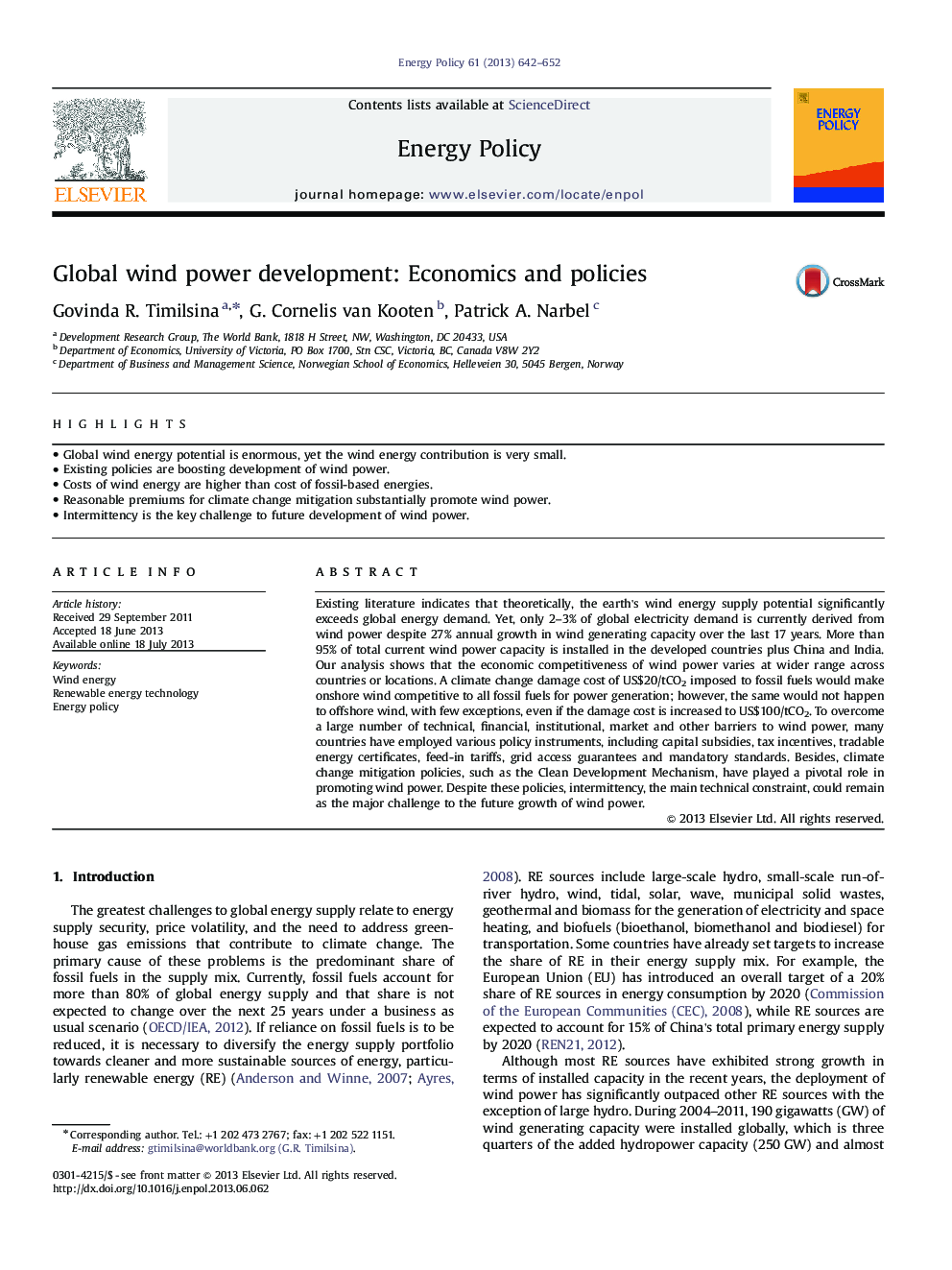| Article ID | Journal | Published Year | Pages | File Type |
|---|---|---|---|---|
| 7404725 | Energy Policy | 2013 | 11 Pages |
Abstract
Existing literature indicates that theoretically, the earth's wind energy supply potential significantly exceeds global energy demand. Yet, only 2-3% of global electricity demand is currently derived from wind power despite 27% annual growth in wind generating capacity over the last 17 years. More than 95% of total current wind power capacity is installed in the developed countries plus China and India. Our analysis shows that the economic competitiveness of wind power varies at wider range across countries or locations. A climate change damage cost of US$20/tCO2 imposed to fossil fuels would make onshore wind competitive to all fossil fuels for power generation; however, the same would not happen to offshore wind, with few exceptions, even if the damage cost is increased to US$100/tCO2. To overcome a large number of technical, financial, institutional, market and other barriers to wind power, many countries have employed various policy instruments, including capital subsidies, tax incentives, tradable energy certificates, feed-in tariffs, grid access guarantees and mandatory standards. Besides, climate change mitigation policies, such as the Clean Development Mechanism, have played a pivotal role in promoting wind power. Despite these policies, intermittency, the main technical constraint, could remain as the major challenge to the future growth of wind power.
Related Topics
Physical Sciences and Engineering
Energy
Energy Engineering and Power Technology
Authors
Govinda R. Timilsina, G. Cornelis van Kooten, Patrick A. Narbel,
